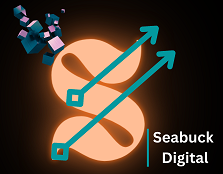I. Introduction

A. Explanation of long-tail keywords
Let’s talk about the pivotal point. You may have heard this term discussed around the world of SEO. What does it actually mean? Well, simply put, long-tail keywords are more specific and targeted keyword phrases that consist of three or more words.
B. Importance of long-tail keyword strategy
Now, you might be thinking, why should I care about long keywords? That’s where the importance of long-tail keyword strategy comes in. Targeting long-tail keywords in your SEO strategy have numerous advantages. By using this strategy you can improve your search engine rankings, drive more targeted traffic to your website, and ultimately increase your conversion rates.
C. Purpose of the article
This article’s main goal is to give you a comprehensive overview of long-tail keyword strategy. The advantages of employing this specific type of keywords, keyword research, long-tail content creation, on-page SEO, backlinking with this specific type keywords, local long-tail keyword strategy, and tracking and evaluating the performance of your long-tail keyword strategy are all topics we’ll cover. So let’s dive into it!
II. Benefits of Long-Tail Keyword Strategy

Now, let’s talk about the benefits of using a long-tail keyword strategy in your SEO efforts.
A. Increased visibility in search engine results pages
One of the major advantages is increased visibility in search engine results pages. Using long-tail keywords makes it simpler for search engines to recognize the relevance of your content and display it to visitors who are actively looking for that particular information. Long-tail keywords are more specialized and geared to your niche.
B. More targeted traffic to your website
But it’s not just about visibility. By targeting long-tail keywords, you can also drive more targeted traffic to your website. These are people who are more likely to be interested in what you have to offer and are more likely to engage with your content. And that, my friend, leads to higher conversion rates.
C. Higher conversion rates
Consider this: If someone is looking for a certain good or service and finds your website as a result of your targeting the precise long-tail keyword they’re using, they are far more likely to make a purchase or perform another desired activity. Hence, by employing a long-tail keyword strategy, you not only raise your search engine rankings but also the quality of your visitors. The quality visitors in turn raise your conversion rate and, eventually, your bottom line.
III. Keyword Research

A. Identifying seed keywords
When it comes to creating a successful keyword strategy, it all starts with research. The first step is to identify your seed keywords – these are the general topics that you want to target.
B. Using keyword research tools
Once you have your seed keywords, it’s time to dive into some keyword research tools. You may find numerous tools that can assist you in locating related long-tail keywords that are pertinent to your niche, both free and paid.
C. Analyzing search volume and competition
However, it’s not just about finding a bunch of keywords and throwing them into your content. You also need to analyze the search volume and competition for each keyword. You want to find keywords that have a decent search volume – meaning people are actually searching for them – but also have low competition, so you have a better chance of ranking for them.
Although it can take some time and labor, this procedure is necessary if you want to develop a keyword strategy that truly generates results. Trust me, putting in the work upfront will pay off in the long run. The result is visible when you start seeing more targeted traffic and higher conversion rates on your website.
IV. Creating Long-Tail Content

Now that you have your long keywords, it’s time to put them to work by creating some killer content.
A. Using long-tail keywords in the content
First things first: make sure your content strategically incorporates long-tail keywords. This means incorporating them naturally into your headlines, subheadings, and throughout the body of your content. But, it’s crucial to avoid going overboard because you don’t want to compromise the quality of your material in order to add additional keywords.
B. Providing valuable and informative content
Speaking of quality, it’s crucial that you’re providing valuable and informative content that your audience actually wants to read. This means doing your research, understanding your audience’s pain points, and crafting content that answers their questions and provides solutions to their problems.
C. Optimizing content for user experience
However, you must remember it’s easier said than done. It is all about how you do it. Make your information simple to read and browse to improve the user experience. This means breaking up your content into short paragraphs, using subheadings, and incorporating images and other visual elements to break up the text.
Long-tail content creation requires time and work, but it pays off when you start to see increased traffic and engagement on your website. Always keep your audience in mind when creating content, and prioritize quality over quantity.
V. On-Page Optimization

On-page optimization is all about making sure that your website’s pages are optimized for search engines and user experience. Here are a few ways to use long-tail keywords to improve on-page optimization:
A. Using long-tail keywords in Meta tags
Make sure that your keywords are included in your Meta tags, such as the page title and Meta description. Search engines will be able to comprehend the content of your page more clearly as a consequence, which will increase your exposure in search results.
B. Using header tags to structure content
Structuring your content with header tags (H1, H2, H3, etc.) makes it easier to read for users. It also helps search engines understand the hierarchy of your content. Include your keywords in these header tags to improve the relevancy of your content for specific search queries.
C. Optimizing page speed
Page speed is a very vital and critical factor in both user experience and search engine rankings. Make sure your website is optimized for speed. Speed optimization can be done by reducing image and file sizes, minifying CSS and JavaScript, and using a content delivery network (CDN) to reduce loading times. By doing this, you can raise your website’s search engine ranks and maintain user interest.
VI. Backlinking with Long-Tail Keywords

A. Building backlinks with long-tail anchor text
Backlinking is a crucial factor to consider when it comes to boosting your website’s visibility and credibility. Backlinks are links that direct users from other websites to your own website. It is always best to remember that all backlinks are not created equal. Building backlinks with long-tail anchor text can significantly improve your website’s search engine ranking for specific long-tail keywords.
B. Using guest blogging to build backlinks
Guest blogging is a popular way to build backlinks with long-tail anchor text. You can gain valuable exposure for your website and attract more traffic by writing high-quality articles and guest posts on reputable websites. When including long-tail anchor text in your guest posts, be sure to choose relevant keywords that accurately reflect the content of your website.
C. Monitoring backlinks for quality
It is said before that all backlinks are not created equal. It’s important to monitor your backlinks. Monitoring will ensure that the backlinks are coming from reputable sources. Low-quality backlinks from spammy or irrelevant websites can harm your website’s reputation and even lead to penalization from search engines.
Overall, building high-quality backlinks with long-tail anchor text and monitoring their quality is an essential part of any successful long-tail keyword strategy. Quality link-building can significantly improve your website’s search engine ranking. It will help you to attract more targeted traffic to your site.
VII. Local Keyword Strategy

A. Optimizing for local long-tail keywords
It’s important to have a solid local long-tail keyword strategy in place when it comes to local businesses. This involves optimizing your website and content for keywords that are specific to your location and the services or products you offer.
B. Using location-based long-tail keywords in content and Meta tags
One way to optimize for local long-tail keywords is to include them in your website’s content and Meta tags. For example, if you run a bakery in San Francisco, you might use long-tail keywords like “best sourdough bread in San Francisco” or “artisanal cakes in San Francisco” in your content and Meta tags.
C. Claiming and optimizing your Google My Business listing
Another important aspect of local keyword strategy is claiming and optimizing your Google My Business listing. This allows you to show up in local search results. It also provides potential customers with important information like your hours, address, and phone number.
By utilizing location-based keywords and optimizing your Google My Business listing, you can improve your visibility in local search results and attract more customers to your business.
VIII. Tracking and Measuring Success

A. Tracking long-tail keyword rankings
Tracking and measuring success is an essential part of any marketing strategy, and long-tail keyword strategy is no exception. By tracking keyword rankings, you can see how your website is performing in search engine results pages.
B. Measuring traffic and conversion rates
Measuring traffic and conversion rates can help you understand if your keyword strategy is attracting the right audience and converting them into customers.
C. Analyzing and adjusting long-tail keyword strategy
Measuring traffic and conversion rates can help you understand if your long-tail keyword strategy is attracting the right audience and converting them into customers.
It’s important to regularly analyze and adjust your long-tail keyword strategy based on your findings. Consider using fresh keywords as a replacement for any that aren’t working properly. On the other hand, pay attention to optimizing your content around specific keywords if you discover that they are bringing in a lot of traffic and conversions.
Overall, monitoring and evaluating the results of your long-tail keyword strategy can assist you in making informed choices that raise the visibility, traffic, and conversion rates of your website.
IX. Conclusion
A. Recap of Long-Tail Keyword Strategy
Whew, we’ve covered a lot of ground on long-tail keyword strategy! Just to recap, we discussed how long-tail keywords can help increase visibility, attract targeted traffic, and improve conversion rates. We also covered the process of researching and creating long-tail content, optimizing it for search engines and user experience, and building backlinks with long-tail anchor text. Plus, we talked about optimizing for local search and tracking your success metrics.
B. Importance of ongoing optimization and monitoring
However here is the most important thing and that is SEO is a constantly evolving field, and long-tail keyword strategy is no exception. It’s important to continually monitor and adjust your approach to ensure ongoing success.
C. Future trends in Long-Tail Keyword Strategy
And as search engine algorithms and user behavior change, we can expect new trends and best practices to emerge.
So keep learning, keep experimenting, and keep optimizing your long-tail keyword strategy. Who knows, maybe you’ll be the one to discover the next big trend in SEO!
X. FAQs
What is long-tail vs short tail keywords?
In digital marketing, long-tail keywords are longer and more specific keyword phrases that usually consist of three or more words. Short-tail keywords on the other hand are shorter, more generic keyword phrases that typically consist of one or two words.
For example, “best camping sites for women during winter” is a long-tail keyword, while “camping site” is a short-tail keyword.
How to generate long-tail keywords?
There are several ways to generate long-tail keywords, including:
- Brainstorming: Start by thinking of broad topics related to your business, then consider more specific phrases that people might use to search for information related to those topics.
- Using keyword research tools: Tools such as Google Keyword Planner, Ahrefs, and SEMrush can help you identify long-tail keywords that have a high search volume and low competition.
- Analyzing search queries: Look at the search queries that are driving traffic to your website and identify any long-tail phrases that people are using to find your content.
- Analyzing competitor keywords: Look at the long-tail keywords that your competitors are using in their content and consider incorporating them into your own strategy.
- Using natural language: Consider the way that people naturally speak or write about your topic and use those phrases as long-tail keywords.
Read More:
How to find Trending Keywords on YouTube – Seabuck Digital
Keyword Research in SEO: The Comprehensive Guide in 2023 – SeabuckDigital

